The Niagara Hotel: Porter & 7th Street, Buffalo (1888-1911)
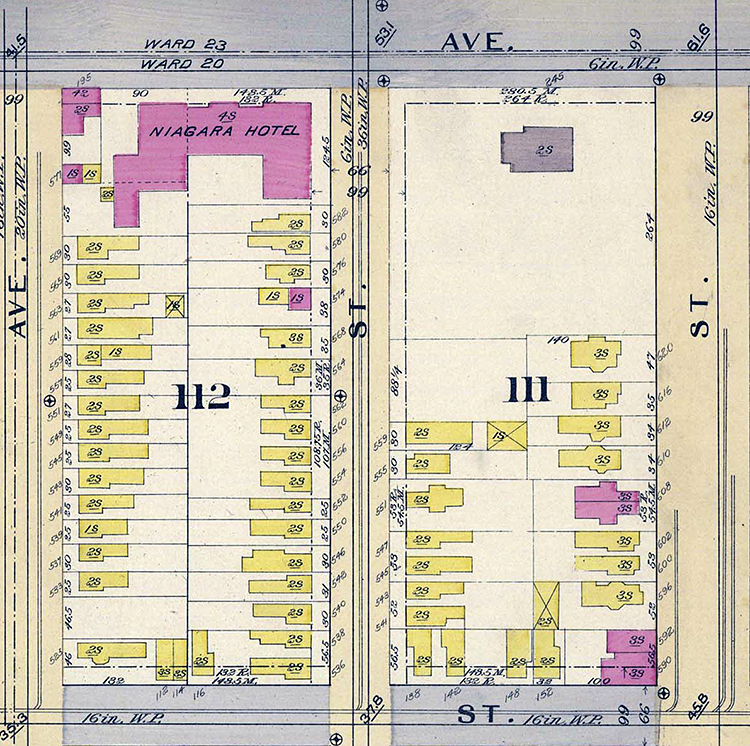
1894 map of the Niagara Hotel Location. Image source: Erie County web.
In 1888, George Howard Lewis, wealthy Buffalo businessman, determined to construct a 5-story brick luxury hotel a few blocks from his mansion, Elmstone. The nearest neighbor across 7th Street was the Porter Thompson home. Mr. Lewis had visited fine hotels on his European travels and thought Buffalo should have such a hotel. The city did not have a first class hotel and would not for many years to come. He hired the Buffalo firm of Green & Wicks to design the hotel on a rise of ground at Prospect Hill, two blocks from the Niagara River. The site occupied 222 feet along Porter Avenue ans 124.5 feet on 7th Street. One commenter said it had "the look of a magnificient private home." It featured 125 spacious rooms, some with baths.

The Niagara Hotel. Image source: internet
It was George Lewis's hobby hotel, but he took a hands-on approach to the details despite having professional manangement. Foremeost was the atmostphere he wanted to create. Across from the entrance was the palm garden, covered with a glass roof. Here he could continue his love for tropical gardening by creating what a visitor called "Florida" with palms, fountains, and tropical plants. Guests could relax along piazzas adjoining the palm garden, where Oriental rugs and easy chairs were lined. A harpist played every evening.

Interior photo of the palm garden. Image source:Picture Book of Earlier Buffalo
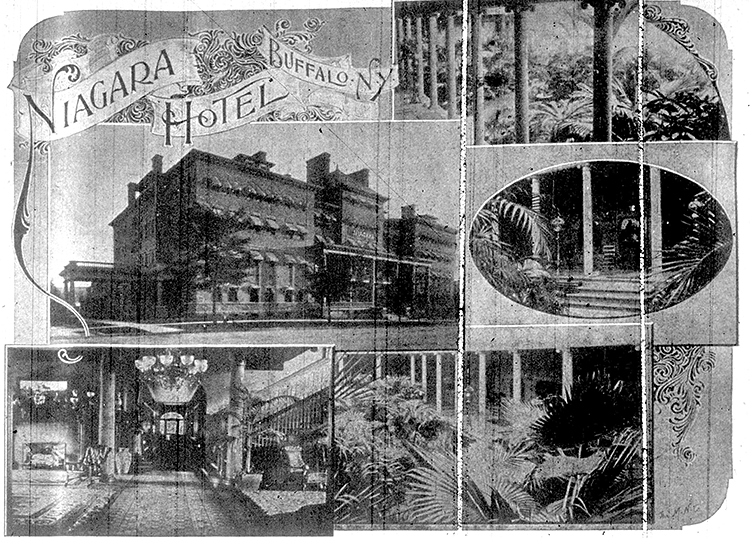
Buffalo Morning Express photos from 1891.

Lunch menu from 1896
The hotel was billed as a residential hotel as well as serving transient guests. In 1897, President McKinley stayed at the hotel with his entorage duirng the GAR convention. But 1897 was also the year that George Lewis died suddenly. His widow closed the hotel entirely in April, 1898; it had been running at a loss. It sat vacant because she refused to lease it to any entity that would sell liquor on the premises
She changed her mind in 1900, and sold the hotel and all its furnishings to a group including Harry Yates, who would in a few years go on to own the brand new Lafayette Hotel. The "Buffalo Hotel Company" decided to expand the footprint of the hotel by purchising land on Porter and having Esenwein & Johnson build an additiion. They planned to offer rooms for Pan-American visitors and advertised that it was possible to house 500 visitors. Further, they updated the mechanicals in the hotel, replacing gas with electricity. They also remodeled the former palm room and conservatory into dining rooms that could seat 400..
After the Exposition closed, the hotel also closed. In September, 1902, Charles J. Spaulding, a well-known Buffalo hotel manager, was brought back to reopen the hotel. It was still a financial drain and the owners were trying to negotiate with creditors to pay 25 per cent of what was owed. Spaulding and Joseph A. Oakes worked to bring it into profit, but there were simply not enough wealthy travelers to fill its rooms.
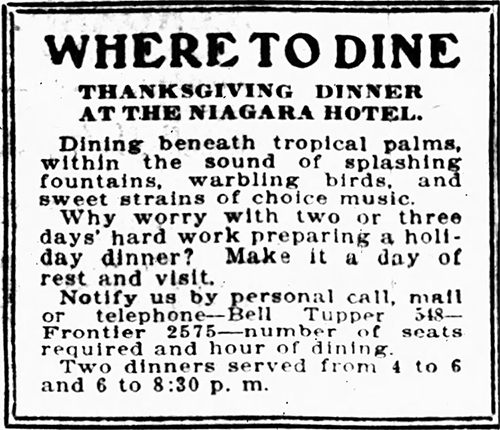
Advertisement for diners. Image source: Buffalo Courier 1904
In February, 1903, John G. Milburn was in talks with the U.S. government to purchase the hotel for use as a marine hospital. The government was searching for a suitable location; the Niagara Hotel was offered for sale at $125,000, less than its valuation of $200,000. The offer was not accepted.
The hotel continued until 1909, when Harry Yates determined to close it and demolish it.
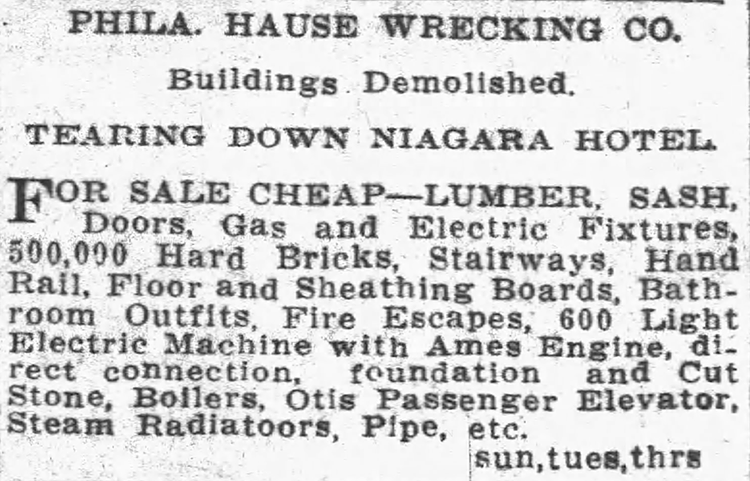
Ad from the 1911 Buffalo Times for furnishings from the hotel.
In 1911, the Niagara Hotel, twenty-three years old, was demolished.
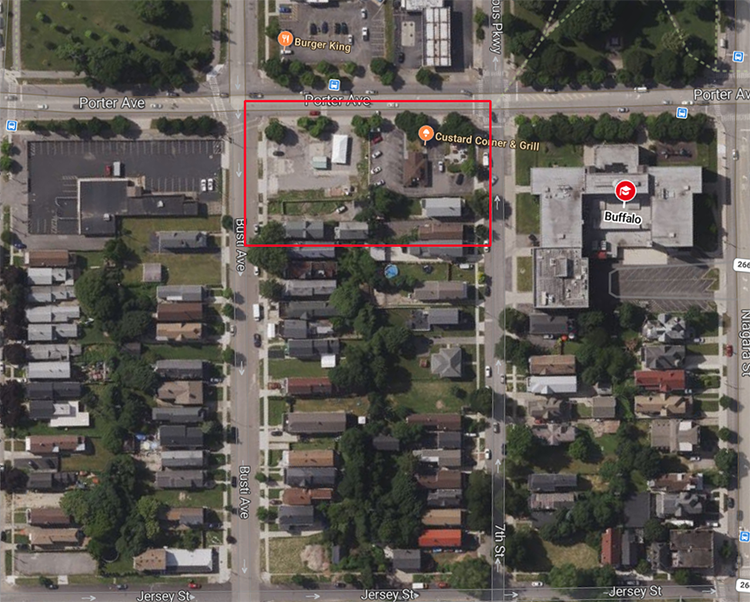
Google image of the location of the former Niagara Hotel
To read more about George Howard Lewis, his wife Katherine Bell Lewis, look here. To read more about Elmstone, the Lewis mansion in Buffalo, look here.